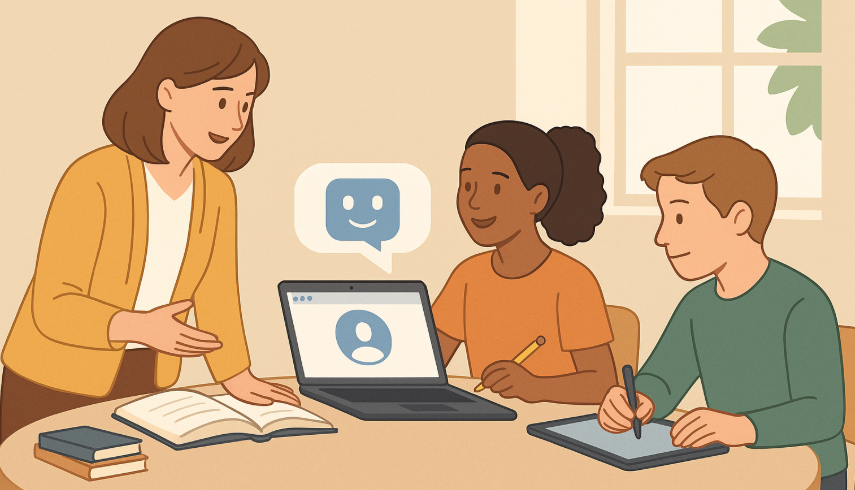Section 1 — How Big Tech Shapes Today’s Education Infrastructure

From Google Workspace for Education to Microsoft Teams, Big Tech has become the silent backbone of classrooms across Canada. Apple’s tablets and laptops remain staples in private and independent schools, while OpenAI-powered writing and tutoring tools are increasingly common in both K–12 and higher education.
According to EdCan Network reports, over 70% of Canadian schools now integrate at least one AI-assisted learning tool.
These platforms promise efficiency and personalization — instant feedback, adaptive practice, data dashboards — but they also raise important questions about control and accountability.
This “platformization” of education means that private companies now play an outsized role in shaping not just tools, but pedagogy itself.
Section 2 — Opportunities: Personalized, Data-Driven, and Accessible Learning

Technology’s promise in education lies in its ability to make learning more personal and inclusive.
AI-driven systems can tailor lessons to each student’s pace and strengths, while digital platforms allow students to learn beyond the boundaries of school hours or geography.
In Canada, this flexibility has made learning more accessible — particularly for bilingual students, international families, and those seeking enrichment opportunities outside the school day.
At Think Academy Canada, we see this shift as part of a broader evolution:
Learning can be both structured and flexible — powered by science, guided by teachers, and supported through online classrooms that adapt to how each student learns best.
Our teaching methods combine data-driven instruction and concept-based learning, ensuring technology serves pedagogy — not the other way around.
Used well, EdTech doesn’t replace traditional education; it amplifies it.
Section 3 — Concerns: Privacy, Equity, and Digital Overload

The growing presence of technology in classrooms brings real concerns.
Canadian parents and educators increasingly ask: Where does student data go? Who owns it?
Privacy and data ethics have become defining issues for 2025. Many schools depend on U.S.-based cloud services, raising questions about compliance with Canadian privacy laws and data storage standards.
Beyond privacy, equity remains a key challenge.
Urban and independent schools benefit from robust tech infrastructure, while rural districts still face access barriers — a digital divide that limits opportunities for some students.
And then there’s the question of attention. Screen fatigue, algorithmic learning loops, and reduced social interaction have sparked nationwide discussions.
In fact, several provinces are re-evaluating their school phone policies — not just to limit screen time, but to rebuild focus and human connection in classrooms.
Related reading: Mobile Phone Ban: Education Policy in Public vs Private Schools
Section 4 — The Future: Balancing Innovation and Integrity

Technology in education is not going away — the question is how we use it responsibly.
The most promising future is a hybrid one, where digital tools enhance, not replace, the human connection between teacher and student.
Canadian educators are already experimenting with blended learning models that combine real-time instruction with AI-based feedback and analytics. These hybrid systems make classrooms more adaptive and inclusive when designed with care.
As EdTech continues to evolve, the goal should be clear: keep learning human-centered while embracing the efficiencies and insights technology can bring.
“The best education technology doesn’t just make learning faster. It makes understanding deeper.”
Conclusion — Rethinking What “Education” Means in a Tech-Driven Era
Big Tech has transformed the infrastructure of learning, but not its purpose.
Curiosity, empathy, and critical thinking remain at the heart of every meaningful education system — digital or not.
As Canada continues to navigate this new era, the challenge is no longer about whether schools adopt AI, but how they preserve human connection and intellectual independence in the process.
“The future of learning isn’t digital or human — it’s both.”
As classrooms evolve, families are also rethinking how children learn best — not just what tools they use.
Understanding your child’s unique learning style and academic foundation is the first step toward meaningful, balanced education.
To support that process, Think Academy Canada offers a Free Evaluation designed to align with the Ontario curriculum and identify personalized learning pathways that encourage confidence and curiosity.
Explore more insights on AI, digital learning, and education innovation at Think Academy Canada.


